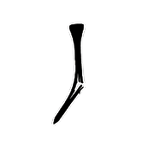Master Your Green Reading
3 minIf you struggle with 3-putts (and even one per round is too many), Titleist staff member Tom Patri has a remedy. To be a successful putter you need to be proficient at reading greens. And you need to embed that skill into a routine that you follow faithfully. Formalizing this process will improve the quality of your initial putts. This will help you make more 1-putts, but more importantly, it will leave you with shorter second putts, the biggest factor when it comes to avoid 3-putts.
Give Tom's process a try and see what a difference it makes on the final scores you post:
• Initial Linear Read – Take a look at your putt from behind the golf ball, with the hole in the background. Get a general feel for the length of the putt and the amount of sidehill pitch on the green. With this information, develop an initial read and visualize the line your golf ball will need to start on to break towards and finish at the hole.
• Secondary Read – Now, move to the low side of your putt and view the green from half-way between your ball and the cup. This secondary read will show you if you're putting uphill, downhill, or if your putt is fairly flat. It will also help confirm your initial read or give you additional evidence to adjust it.
• Return to the vantage point behind the ball and adjust your initial read and start line, guided by your secondary look at the putt. Standing to the side of your ball, make some practice strokes, rehearsing the speed you'll need to roll the ball. Allow your eyes to see and your brain to feel the putt.
• Step in and address the ball. Square your putter face to your intended start line. Take one final look at the hole, then make a stroke, reproducing the feel you've rehearsed in your mind's eye.
• Retrieve your golf ball from the bottom of the cup or tap in the gimmee you have left..

























